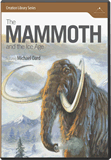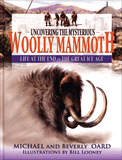
Woolly Rhinoceros Skull Found In Himalayas
Pliocene rhino plowing pre-Pleistocene snow pleases paleontologists.
News Source
- ScienceNews: “Woolly Rhinos Came Down from the Cold”
A woolly rhinoceros skull fossilized in the Himalayan foothills has excited paleontologists seeking the origin of Ice Age animals. Evolutionary thinking has long held that the big woolly beasts associated with the Ice Age slowly “evolved as a response to the ice sheet expansion.” The Pliocene location of this woolly rhino’s skull has given the researchers publishing in September 3’s Science a new tale to tell.
Dr. Xiaomin Wang found the skull at the frigid altitude of 4,207 meters (about 13,800 feet) in the high Tibetan plateau known as Zanda Basin. Most such fossils have been found in Pleistocene (ice age) rock, so Wang believes its presence in the deeper Pliocene layer indicates it was an ancestor of the Ice Age woolly rhinoceros.
Based on some subtle characteristics, Wang and colleagues have classified their rhino as a new species, Coelodonta thibetana, declaring it “the earliest representative of the genus.” The skull is roughly the same size as today’s white rhinoceros’s skull.1 Like living and extinct rhinos, the Pliocene skull appears to have had a large horn. However, based on the size of horn support structures, paleontologists think the horn was unusually large, like an elasmotherium’s.2
The horn is key to the new tale. The researchers write, “The skull of the Zanda woolly rhino shows signs of the snow-sweeping morphologies” found on Pleistocene rhinos. Living rhinos have a rounded horn, but Pleistocene woolly rhinos appear to have had large flattened horns, ideal for sweeping snow off edible grasses. Ice Age cave paintings depict the woolly rhino poised with its horn tipped forward as if ready to sweep a path to dinner. The shape of the horn support structures on the Zanda skull resembles that on the Pleistocene specimens, so the researchers believe the ancestral rhino, living in the high altitude cold climate of Tibet, evolved “snow-clearing adaptations, which became a key preadaptation for its Pleistocene descendents.”
Evolutionists believe the “last” Ice Age in their interpretation of the geologic record began 2.8 million years ago. Since paleomagnetic analyses and isotope ratios in fossil tooth enamel provide a Pliocene date of 3.7 million years ago for the Zanda rhino, the researchers write that the woolly rhino and similar large animals “first evolved in Tibet before the beginning of the Ice Age. The cold winters in high Tibet served as a habituation ground for the megaherbivores, which became preadapted for the Ice Age, successfully expanding to the Eurasian mammoth steppe.”
The woolly rhino, like the woolly mammoth, has become an iconic reminder of the Ice Age. Evolutionists do not have an explanation for the Ice Age and so postulate the occurrence of many ice sheet advances and retreats (glacials and interglacials) within it, yet they have no way to explain the odd combination of cold climate with the vast amounts of humidity needed to produce such a phenomenon. Their 2.8 million year date for this “last” Ice Age is based on ice core analyses interpreted according to presuppositions about the earth’s age. Similarly, paleomagnetic analyses of the sedimentary rocks in the Zanda Basin depends on the unprovable assumptions underlying radiometric dating.3 And analyses of isotope ratios in tooth enamel can only be calibrated by making assumptions about the timing of ancient climate changes. Thus these dates should be disregarded.
The meteorological aftermath of the global Flood (about 4,300 years ago) explains the only Ice Age and provides a reasonable time for it (post-Flood). Lots of evaporation from volcanic waters released into the oceans would have provided sufficient precipitation, even in a world cooling at the poles and clouded by volcanic dust, to produce enough snow to build up ice sheets in high latitudes. Glaciation would have taken about 500 years to peak and then another 200 years to resolve.
The paleontologists’ pleasure stems from finding not just a rhino pre-dating the Ice Age but one evolved and “preadapted” to extreme cold, all prepared to take its place in a frigid world. The skull seems quite similar to its Pleistocene “descendants.” In fact, it is that very similarity that excites the researchers as they consider its “preadaptations” for life on snowy steppes. The Pliocene layers are thought by many creation geologists to have been deposited in association with small localized post-Flood catastrophes, since they also contains fossilized creatures in their apparent native habitats. Thus the Pliocene layers would have entombed these Tibetan creatures—which are pretty much like their Pleistocene counterparts—around the time their cousins proliferated in the well-watered grassy steppes, not a million years before. And the rhinos didn’t have to evolve in Tibet; they (or their rhino ancestors) just had to wander there from the mountains of Ararat.
Further Reading
- Get Answers: Ice Age
For More Information: Get Answers
Remember, if you see a news story that might merit some attention, let us know about it! (Note: if the story originates from the Associated Press, FOX News, MSNBC, the New York Times, or another major national media outlet, we will most likely have already heard about it.) And thanks to all of our readers who have submitted great news tips to us. If you didn’t catch all the latest News to Know, why not take a look to see what you’ve missed?
(Please note that links will take you directly to the source. Answers in Genesis is not responsible for content on the websites to which we refer. For more information, please see our Privacy Policy.)
Footnotes
- Tao Deng et al., “Out of Tibet: Pliocene Woolly Rhino Suggests High-Plateau Origin of Ice Age Megaherbivores,” Science 333, no. 6047 (September 2, 2011): 1285–1288, doi:10.1126/science.1206594, p. 7 of supplemental materials.
- The elasmotherium is one possible candidate for the biblical unicorn. See “Will the Real Unicorn Please Stand Up?”
- See “Radiometric Dating: Back to Basics,” “Radiometric Dating: Problems with the Assumptions,” and “Radiometric Dating: Making Sense of the Patterns.”
Recommended Resources

Answers in Genesis is an apologetics ministry, dedicated to helping Christians defend their faith and proclaim the good news of Jesus Christ.
- Customer Service 800.778.3390
- © 2024 Answers in Genesis





